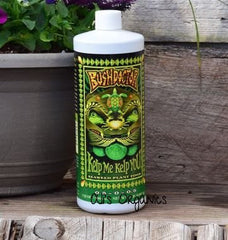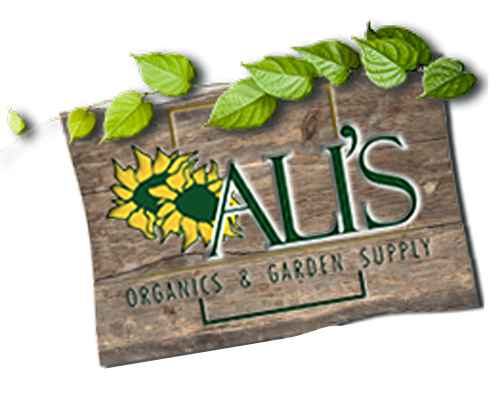Kelp and Its Many Uses
Posted November 06, 2012

Kelp is derived from sea plants and is completely sustainable. It grows quickly in the oceans along the shores. Kelp comes in a liquid, powder or pellet form. Although kelp fertilizer contains only small amount of N, P, and K (highest in Potash) but adds valuable micronutrients, growth hormones (of course natural), and vitamins that help increase yields, improve soil structure, reduce plant stress from drought, and increase frost tolerance. Kelp also increases resistance to pests and diseases. It just simply makes plants healthier. It can be applied directed into the soil or as a foliar spray. All seaweed products are good for supplying major and micronutrients, but kelp seems to provide even more benefits over other seaweed products. It supplies over 50 minerals. Kelp Meal is a perfect compliment to organic gardens, and is suitable for all crops.
A FEW KELP MEAL TIPS:
Easy kelp meal tea: ¼ cup of kelp meal to 1-gallon water, let steep for 1-3 days and agitate daily.
Use kelp meal tea to drench plants before transplanting to help with transplant shock.
Use kelp meal tea as a soak for garlic 1 to 2 hours before planting.
Soak Asparagus Crowns in a kelp meal tea 1 hour before planting for healthier roots.
Sprinkle a small handful of kelp meal early in the growing season around and on the base of squash plants to help deter squash bugs. Do this every 10 days where squash bugs are a problem.
Use liquid kelp as a spray to increase yields by promoting bud formation, overall health, and to slow transpiration.
Use liquid kelp over dry kelp meal on stressed plants for quicker absorption and response.
Use liquid kelp as a foliar spray to help protect plants from cold and hot temperatures.
For vegetable gardens and flowerbeds Apply Kelp Meal at 1-2 pounds per 100 square foot and mix into the top 3” of soil. For transplants, add 1 teaspoon per hole and mix with soil and water in. To feed established plants, side dress 1-2 teaspoons per plant 1-2 times throughout the growing season to promote plant growth. For container and houseplants: for new plantings, mix ¼ lb. per cubit foot of soil. For established plants, side dress 1-2 teaspoons per gallon of soil 1-2 throughout the growing season to promote plant growth.
Down to Earth Kelp Meal is pure Ascophyllum nodosum seaweed from the clean, cold waters of the North Atlantic Ocean. Hand-harvested, carefully dried and finely milled.



Comments (5 Comments)
We feel it’s best to add kelp meal at the time of planting. Once added to the soil, it will start to break down as soon as watered in. So at spring/or new plantings is best. We also mix into our potting soils for starting new seedlings and transplants.
Posted by Ali's Organics on January 04, 2015
what time of the year is best to mix with garden soil for maximum benefits.
I live in NYC zip 10305
Thank you;
Michael
Posted by michael chawki on December 28, 2014
I have a question I cant seem to find a good answer to..
I was wanting to know if I could use other organic liquid fertilizers with Kelp meal. I know there are many ones with different ratios of nutrients in them and it also depends on my soil, which I think is lacking some nutrients. Which nutrients could I add using a liquid fertilizer and which ones are not needed to add when using kelp meal.
I don’t know if this helps but I am growing carrots, beans, peas, cucumbers, squash, eggplant, radishes, bell peppers, tomatoes, lettuce, strawberries and several herbs.
Thanks,
Shirlee
Posted by shirlee on May 15, 2014
You can soak the larger seeds in the kelp solution, like peas, beans, ect. We even soak our garlic cloves in a kelp meal tea solution for an hour before planting. Add humic acid for an extra boost as well for soaking!
Posted by Ali's Organics on March 06, 2014
Instead of planting, am I able to soak seeds into the kelp solution before planting?
Posted by evolver on March 06, 2014
Post Comment